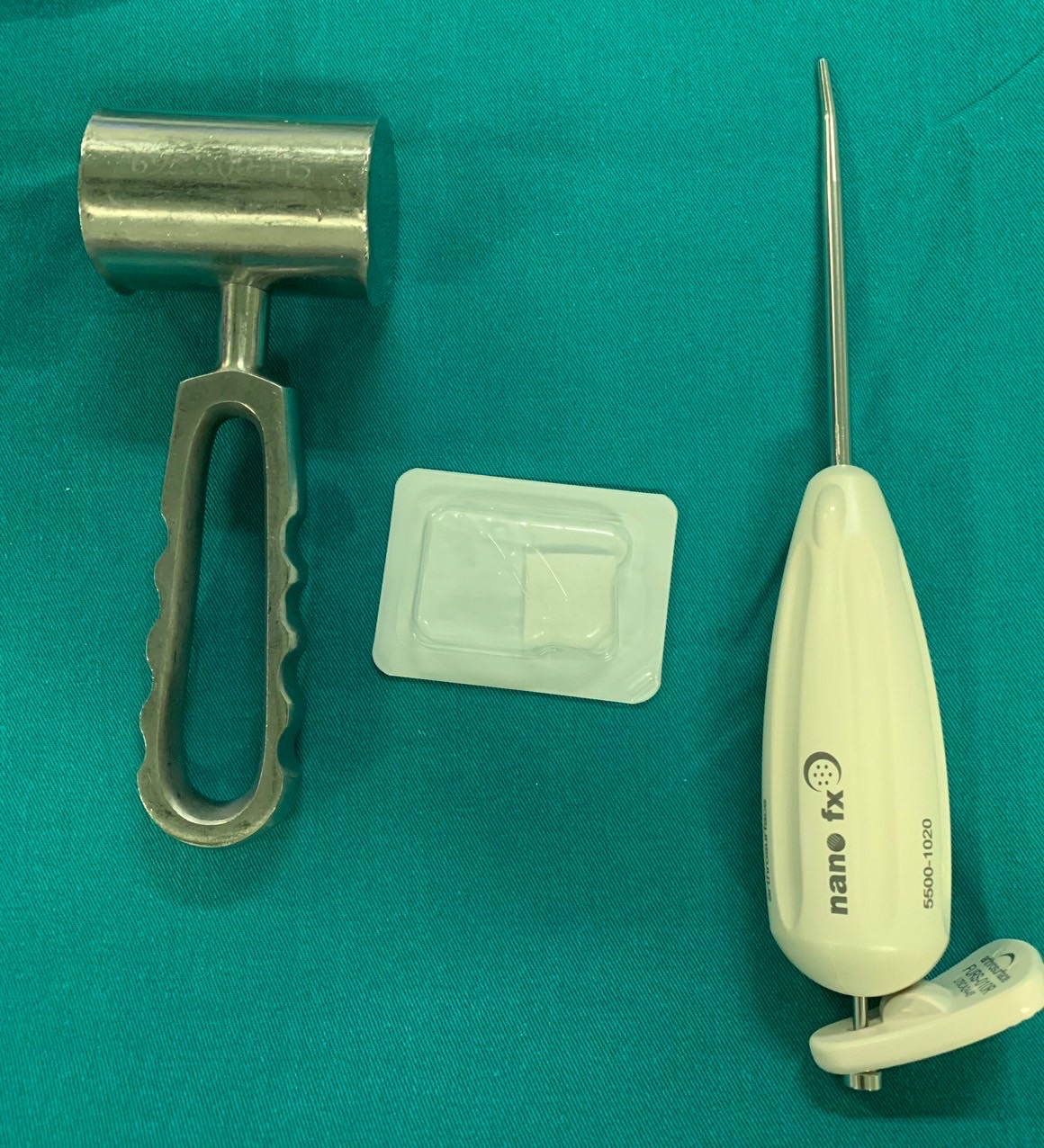The first arthroscopic artificial cartilage implantation was successfully performed in Viet Nam
13/09/2021 15:08
Orthopedic and trauma experts in Viet Duc University Hospital recently performed successfully the first arthroscopic artificial cartilage implantation in Viet Nam.
V.D.S – a 30 year–old-male from Hung Yen went to Viet Duc University (VDUH) with complaint of pain on right ankle after having a sport injury occurred for a year. The pain was repeated many time resulting the patient claudication, affected his ability to run and play sport. Finding from X ray was a foreign body from cartilage in his ankle joint. Assoc. Prof. Dr. Nguyen Manh Khanh, Vice Director of Orthopedics and traumatology Institute, Chief of Department of Upper Extremities surgery and Sport Medicine, VDUH shared that when young people playing sport, the cartilage was broken and fragmented in to the joint, caused the pain and movement restriction. Mr. S was taken the MRI examination and the result showed the talus damages. Analysis of clinical signs and para-clinical examinations, the patient was diagnosed the complex lesions: injured ankle with foreign body inside the joint associated with cartilage damage. Therefore, doctors have planned to remove the foreign body by arthroscopy together with cartilage implantation.
In the past, for patients with cartilage lesions such as total damage, defect or detachment, surgeons would perform the arthroscopy for making holes in the surface of defect cartilage for stimulation the stem cell growing up, facilitating to form the new cartilage. However, this technique did not bring the good results and it’s only of solutions proposed in hoping that new cartilage would be reconstructed. Besides, another technique has been implemented is to make micro-injuries simulation during the operation associated with PRP injection into the joint, but it’s hard to localize the lesions.
Additionally, is grafting by the auto cartilage has been implemented. Surgeons harvest the own patient’s cartilage by some special instruments to graft to the damage area. However, this procedure has some disadvantages because the cartilage removed from the joint which has no pressure area and health cartilage, and a new defect is created in the joint, which could cause pain and affect the patients mentally. Therefore, the technique of arthroscopic artificial cartilage implementation performed by experts of VDUH recently instead of autograft to repair the damaged joints.

First successful arthroscopic artificial cartilage implantation performed in Viet Nam.
Assoc. Prof. Dr. Nguyen Manh Khanh added that the procedure was performed with small incisions, using a 2,7 mm arthroscope instruments, the surgeon was able to lavage and clean the joint, a 1x2cm cartilage fragment was removed. The damaged area was exposed on the surface of the talus located nearby the tibia, which is the main weight bearing of the ankle. Then, the micro-injuries were made by one special instruments to create an ideal holes sized 1×9 in wide and depth.
The special size of instrument is to prevent the patient’s bone damage when drilling, but simulated the bone cell to grow up because the depth of 9mm is right to the trabeculae of bone with a lot of cells of bone marrow.
The artificial cartilage was prepared according to the location of cartilage defect and the size is corresponded to the predicted defect size (2x2cm). The 3D structure of the material to be implanted is like a support frame for the mesenchymal stem cell to grow into the bone marrow and form new cartilage.

Special instruments was used for procedure
Artificial cartilage is highly bio-compatible and is naturally absorbed, bonded without needs for other artificial adhesives. The artificial cartilage can be implanted in various locations and combined with arthroscopy.
The procedure duration was about 30 minutes. With the advantages of technique performed for the first time in Vietnam, experts in VDUH have helped many patients to be operated quicky and effectively, bringing good outcomes.











